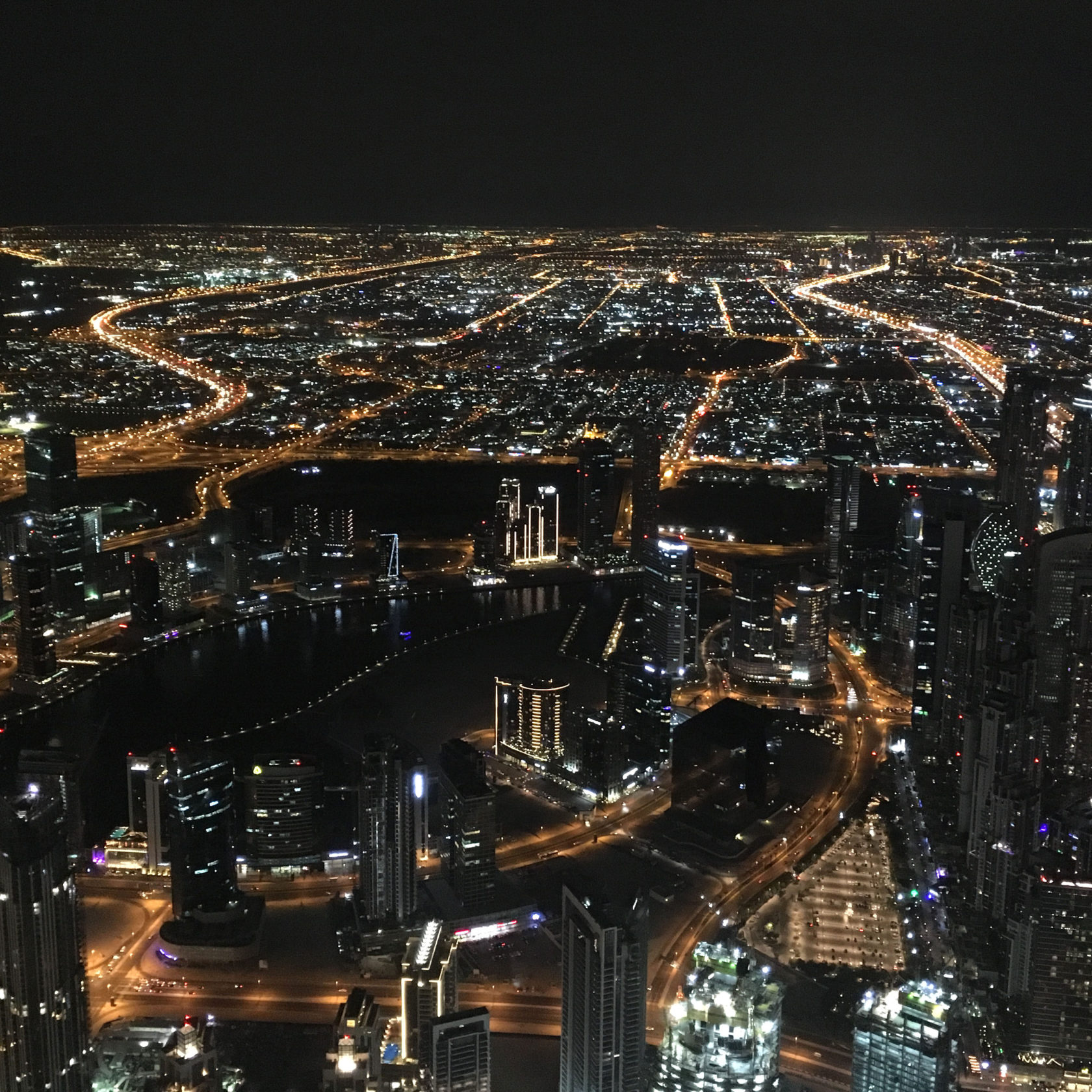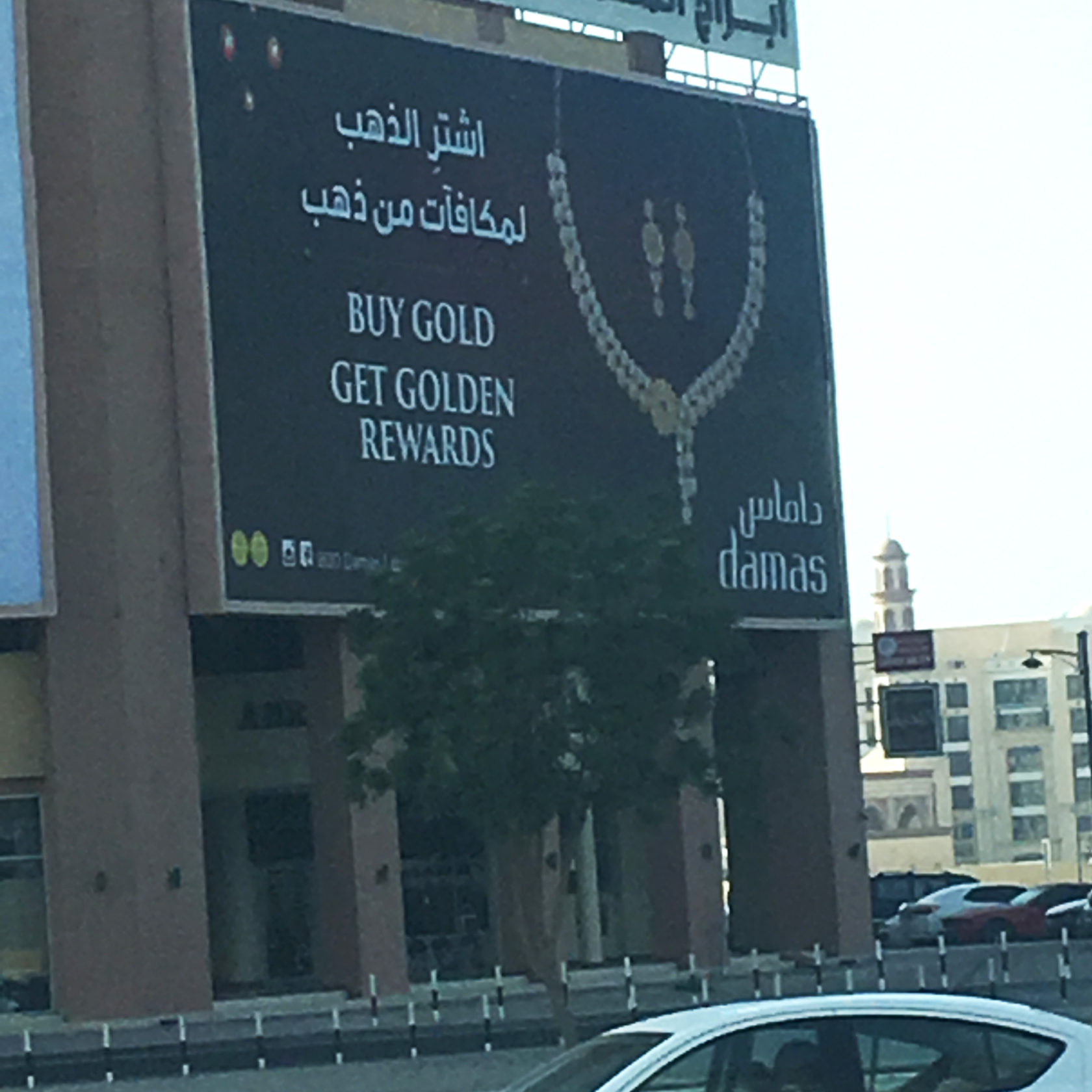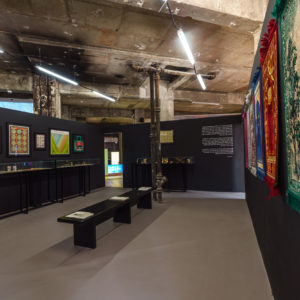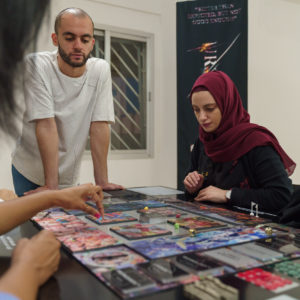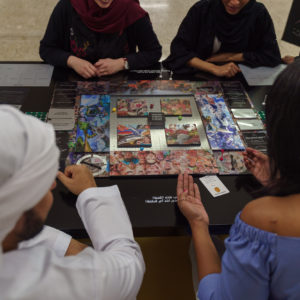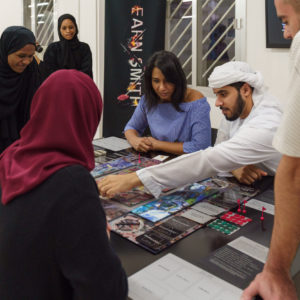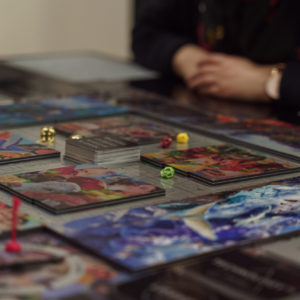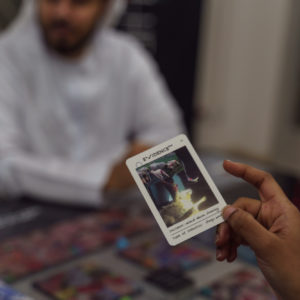Cardiac emergencies commonly occur at night
report by Oddkin @ Fikra Graphic Design Biennial in Sharjah, United Arab Emirates

“Madam in the middle, thumbs up!” says the photographer at the top of the BurjKhalifa building, 584 meters high, as of writing the highest observation point in the world. Natela squats beside Marton and Roel, while we are struggling to hold back the outburst of laughter. We put our thumbs up, exposure flashes many times, while the tower slowly vibrates beneath us. Marton has just blown out the improvised candles by the iPhone flash on his 30th birthday cake, that we smuggled in. Below us, the dystopian body of Dubai spreads out. The illusion of dazzling prosperity with the surprisingly convincing luxury kitsch. When you go “all the way to the top”, you can’t be sentimental enough to comprehend that we are at the highest point of a slowly sinking ship.
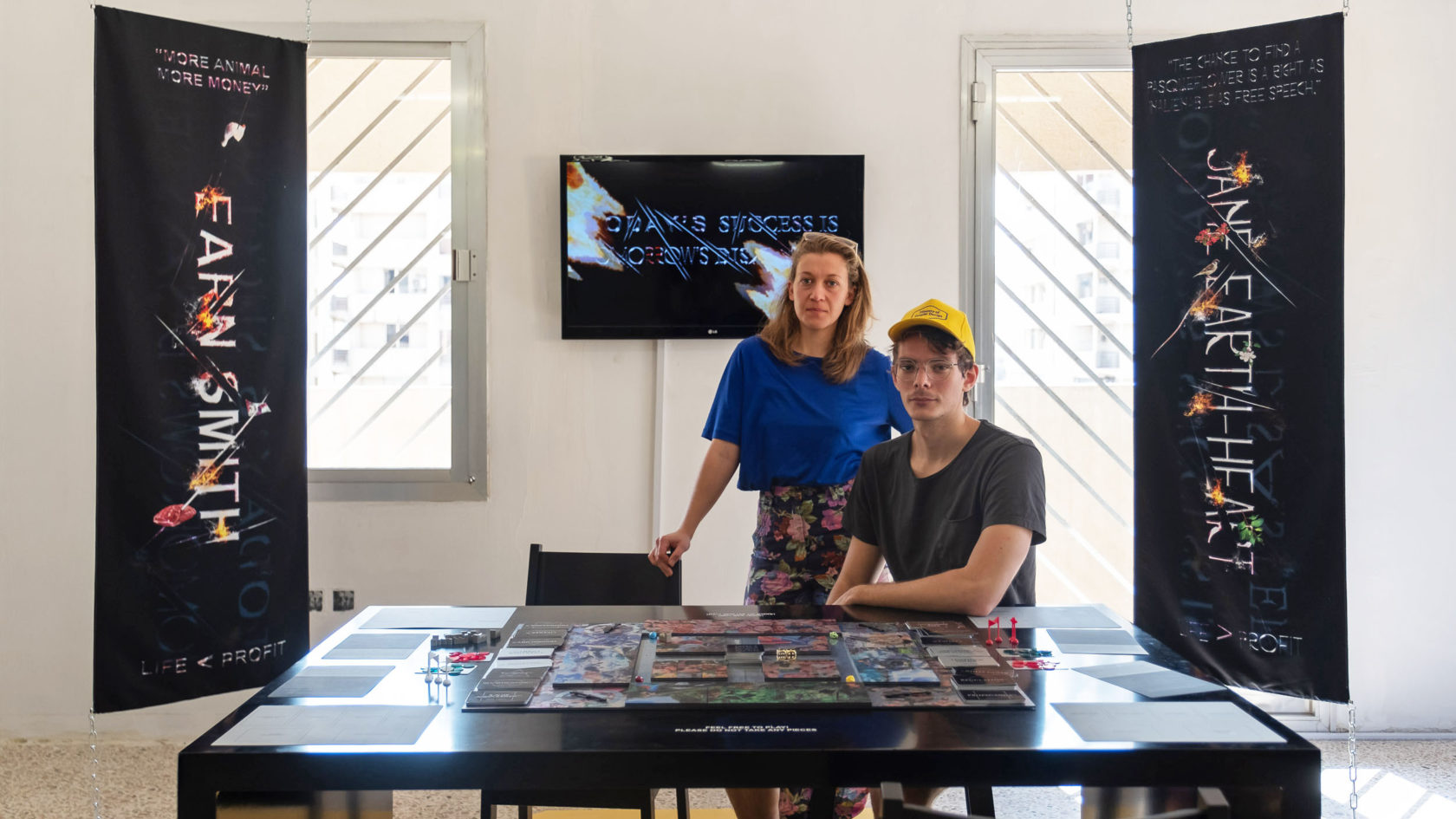
1.
In August 2018, Oddkin got invited to present our board game Today’s Success is Tomorrow’s Disaster at the Fikra Graphic Design Biennial: Ministry of Graphic Design 01 in Sharjah, United Arab Emirates. Thanks to Stimulering Fonds and Stroom Den Haag, we had the opportunity to travel there and stay for a week to present our work, meet with fellow artists, curators as to see ‘new perspectives’ and learn ‘new insights’.
On the 6th of November, in the early morning, we went to the Fikra Biennial site by a shuttle bus organised by Fikra to install our work. We passed through the air-conditioned landscape of Dubai to arrive at Bank Street in Sharjah. The Biennial took place in an abandoned bank building awaiting for demolition. It was located in the neighborhood of the Sharjah Art Foundation right next to the rebuilt version of the Al-Hisn fort, the former home to Sharjah’s rulers.
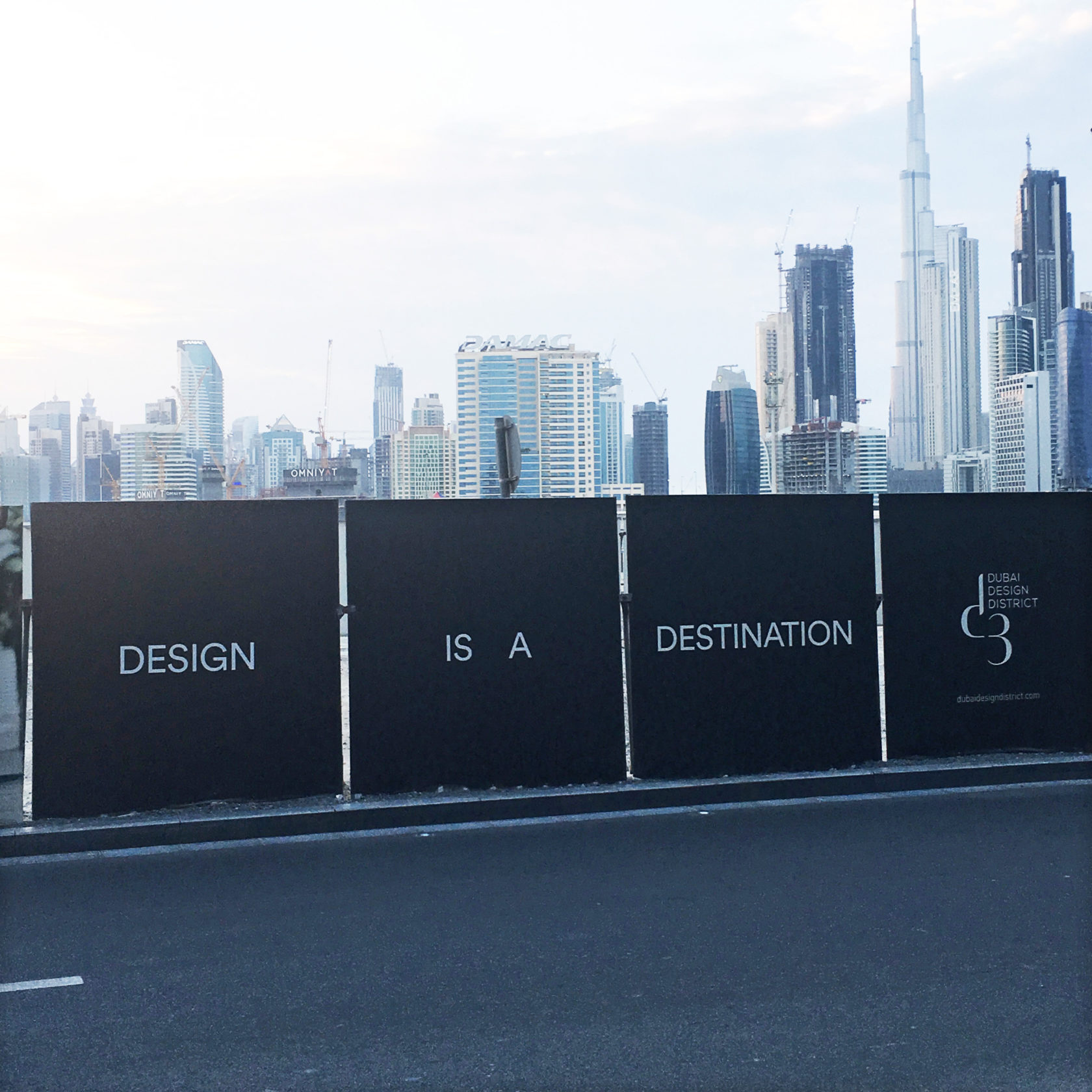
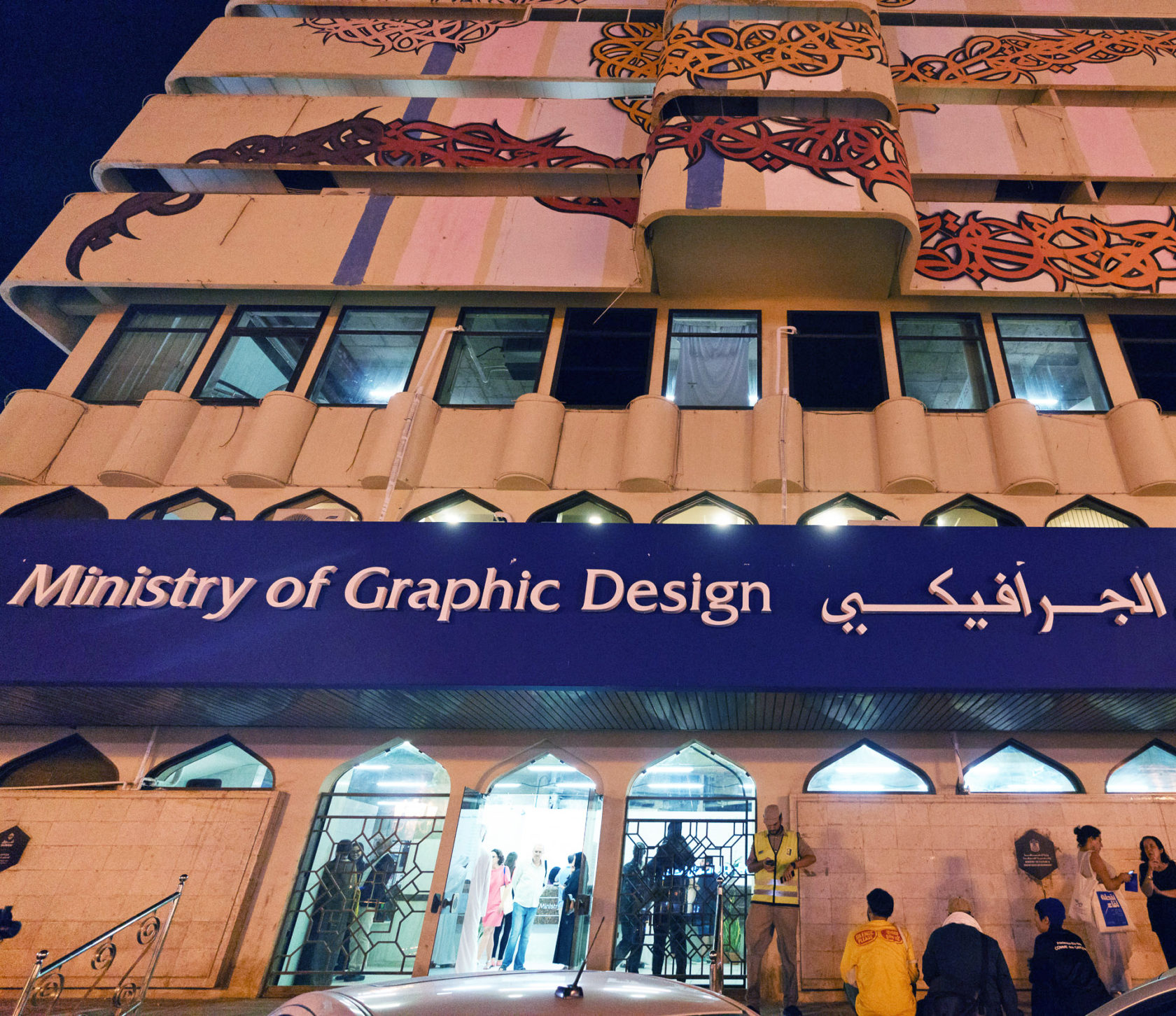
It was hard to adapt to the extreme climatic shifts between the air-conditioned inside and the torrid outside resulting many small, rapid series of goose bumps. Hum of international teams of installers, technicians, experts, volunteers, and fellow participants were lurking around the five departments of the Ministry of Graphic Design: Graphic Optimism, Non-Binaries, Flying Saucers, Dematerializing Language, Mapping Margins, and Office of the Archive established by the artistic directors Na Kim, Emily Smith, and Prem Krishnamurthy, together with the Biennial director, Salem Al-Qassimi, the founder and director of Fikra Design Studio. The overall focus of the biennial was “Spanning urgent narratives, participatory systems, research-based approaches, conceptual reflections, and historical re-framings. Also, the Ministry’s broad scope suggests the unique value of the graphic designer’s interdisciplinary perspective.”

2.
Our work was part of the “Department of Non-Binaries” curated by common-interest (Nina Paim & Corinne Gisel). The Department seeks to encourage discourse on design “practices (that) are in between, at the crossroads, or at the intersection of disciplines and cultures.” The Biennial highlights the autonomous, critical position of designing, mapping, de- or re-contextualising, however “understands design neither as a noun nor as a verb, but as an adverb: design as a gaze or a modality, rather than a discipline.”
From the beginning, we found ourselves comfortable in this experimental, uncertain, fragile, temporary constellation of re-positioning, re-imagining what graphic design is in times of crisis and radical transformation. As a freshly established formation, we were thrilled to be part of such a Biennial that is not afraid to transgress the discourse on the ‘discipline’ by supporting values that are important in our own practice. Since one of the most important departures of our collective lays in the foundation of de-centering:
Oddkin, is a formation of Márton Kabai and Natela Lemondzhava, currently residents of SeeLab in The Hague. Our hybrid, mutant practice shifts between investigative and metaphoric approaches through forensics and intuition that unfolds in critical storytelling. We live in a state of urgency and hopelessness. We wish to reveal the fertility within hopelessness and its vast possibility, unlocking persistent optimism in contrast to psychic entropy. We wish to uncover systemic biases that had been mistaken as truths or legal and demystify hidden affairs that seems to be innocent, efficient or normal. We embrace an ecocentric, post-anthropocentric outlook, crafting radical visions and critical maps to de-center the status-quo. We are specifically interested in the mutation and transformation of human and non-human relationships in the age of the Anthropocene.We carry a responsible attitude towards learning, finding and speculating on forgotten and new ways of multi-species coexistence and world-making. Our works committed to engage in a radically different material world and our place as humans in it.
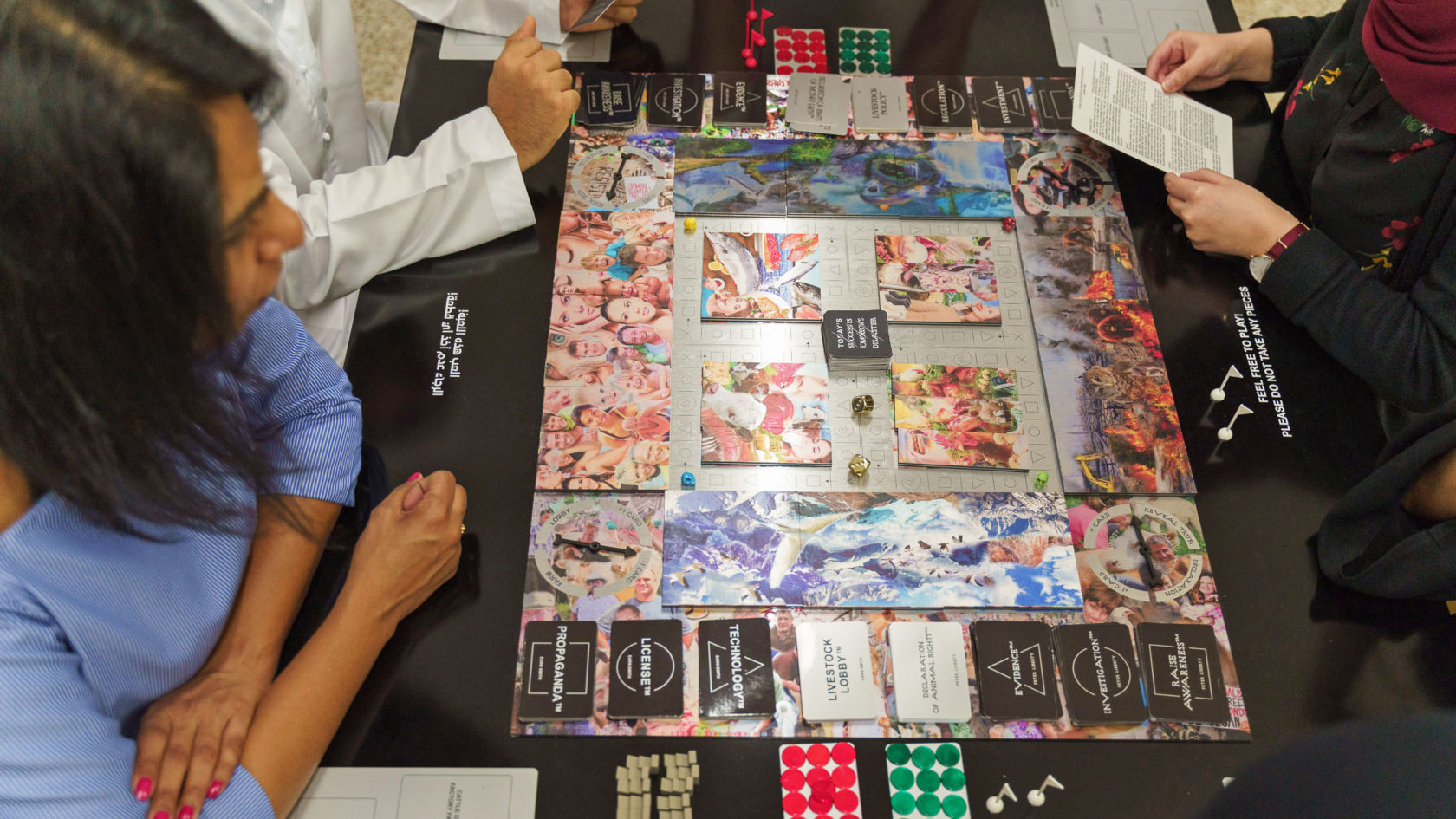
3.
Our work, Today’s Success is Tomorrow’s Disaster is a board game that aims to demystify the complexity of industrial animal agriculture through moral (animal rights) and man-made environmental disasters (climate change, extinction, epidemics..etc). Two capitalist players (agriculture minister & farm owner) strive to improve and maintain the economic growth of the livestock sector, and two activists (animal and environmental activist) investigate to sabotage the farm industry by revealing incriminating evidence of the endless exploitation. The game allows to demystify processes, understand positions, dynamics, hidden relationships. The game does not take part and does not support any specific ideology or ontology, rather it aims to formulate a critique against anthropocentrism and present a hopeless spectacle of the hyper-monster design of the livestock industry. However, the game supports the value of discourse and debate in our times of radical ideological oppositions, social media bubbles, conspiracy theories (post-truth), the age of the Anthropocene.
During the process of preparing our multimedia installation, we faced issues of cultural censorship of UAE. We didn’t perceive it as an obstacle but rather as an opportunity to challenge ourselves to shift our position and to exercise how to speak about the same thing in a different, acceptable way. In our case, the message was more important than the form it entails.
During the preparation phase, we revamped the rules and transformed the game into a multimedia installation. We printed the board graphics into a metal sheet, made a short video-trailer and four flags for the four characters. Together the pieces tended to evoke an intimate, but a sinister atmosphere where humour and existential anxiety can exist hand in hand.
We, designers and artists allied with other fields of knowledge have the capacity to reveal and infiltrate truth into and against the system. In fact, the truth is the ultimate value that we have to get across. In times of information-overload and compassion-fatigue, we need to design radical alarm-clocks and massive wake-up calls to regain our social responsibility and planetary consciousness. The Fikra Biennial has chosen to disguise systemic problems, injustice, corruption, violence, inequality or ecological crisis as graphic design rather than presenting flashy, decontextualized anaesthetics.
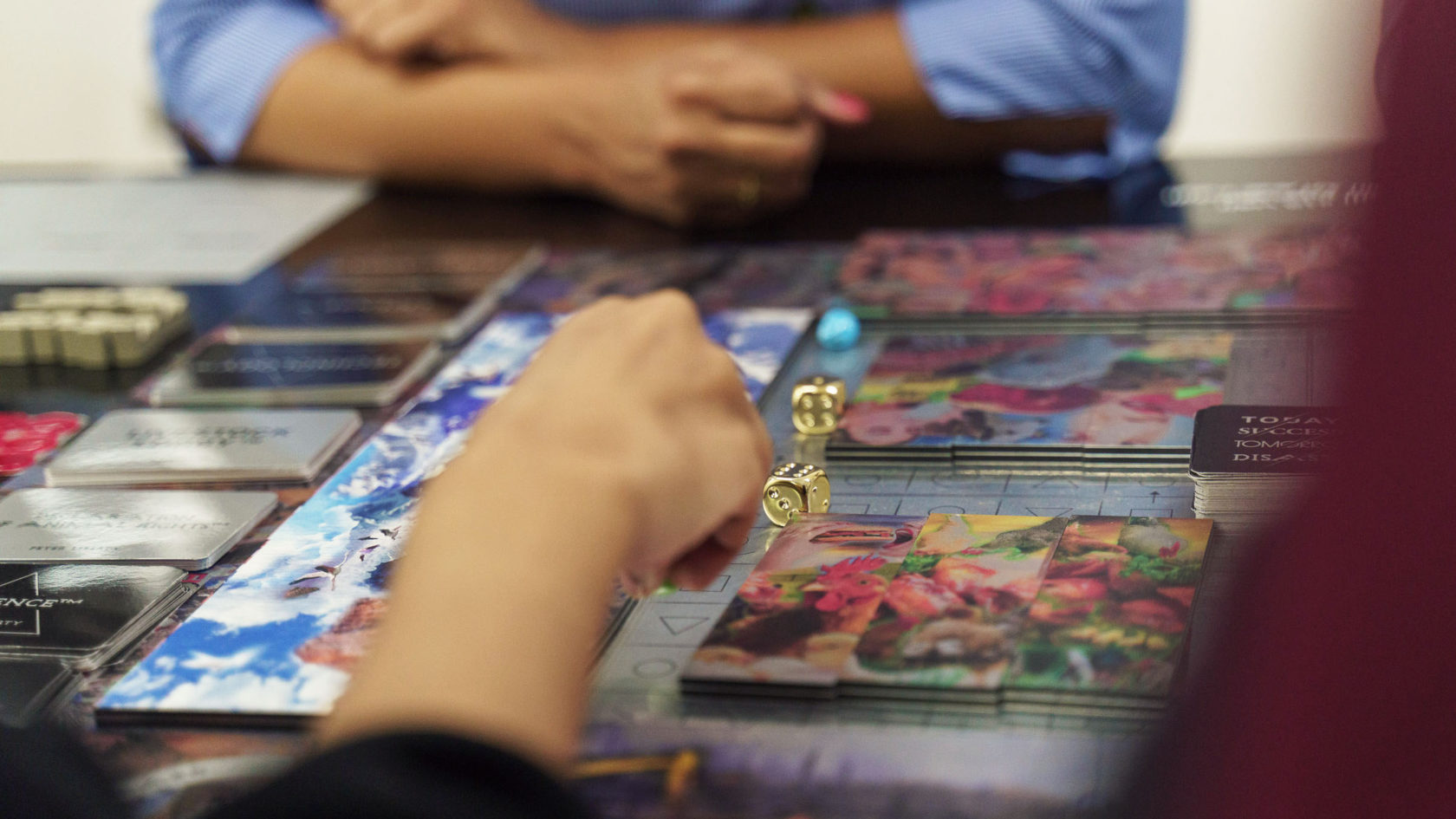
“Buy Gold and Get golden rewards”
To illustrate this duality and relevance of the Fikra Biennial, we have to mention that it was part of the Dubai Design Week. The place of the mainstream, techno-future fixation, the celebration of the problem-solver, innovation-driven imperative, as if they knew the problem or even the question before. In Dubai, design is not only a currency but the secret weapon that acts as strong anaesthetics. Creating reality out of science-fiction with cutting-edge, luxurious chains of shopping malls, where smell- and sound-scapes condition you to feel perfect. Dubai moors your mind into a matrix to escape the unbearable dystopian reality of the city’s unsustainable glamour. While silently, but proudly right outside of Dubai, a critically packed arena of designer warriors has emerged with the brightness of Hesperus standing as a black mirror in front of the Creative Industry.
In contrast to the UAE, in the Western context, the moral and legal boundaries are worn and burned out. It is hard to find any critical discourse that hasn’t been touched, but effects little. In the UAE you still have a sense of ethical decency where you can really hurt someone if you are being outspoken or straightforward. To get a closer understanding of the culture you must be able to read between the lines and find out how to hack it. On the one hand, you compromise, on the other hand perhaps you might avoid unnecessary conflicts. The ‘department of non-binaries’ was curated like that, manoeuvring on the edge of ‘getting caught’ exposing forbidden, illegal discourse. For some it become a safe space, with clear symbolism, but for many it remains disguised as a flashy Graphic Design Biennial.
